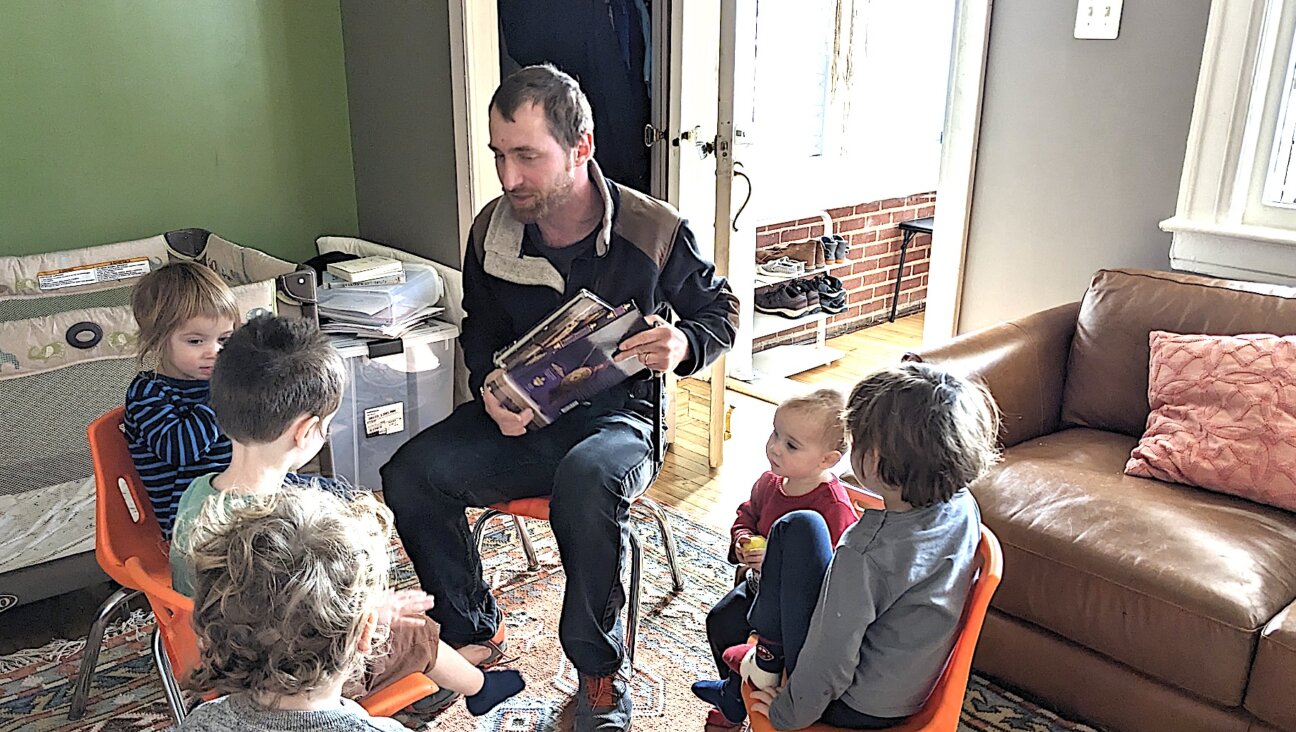Stage Killing
A little more than a century ago, New York’s Yiddish-speaking world was rocked by an attempted murder-suicide involving a member of one of the leading theatrical families of the day. Some 102 years later, I came across an elliptical mention of the incident but could find no more information about it in English. To figure out what really happened, I realized, I would have to delve into the archives of the era’s Yiddish newspapers.
In June 1904, Emma Thomashefsky Finkel, a leading lady on the Yiddish stage, was shot by her husband, who then killed himself. Emma didn’t die; indeed, her husband, Morris Finkel, may have even been aiming not at her but at her lover, David Levinson. Emma was seriously wounded and spent the rest of her life disabled; Levinson walked away from the incident without a scratch.
When Morris Finkel met Emma Thomashefsky in 1893, he was an actor-manager in his 40s who had already been left by his first wife. Emma, the younger sister of Yiddish theater giant Boris Thomashefsky, was a 16-year-old chorus girl. Emma was said to be enamored of the power that surrounded Finkel as manager and impresario. To avoid her brother’s disapproval, Emma ran way with Morris to Philadelphia and married him.
The first few years of their marriage were apparently happy. They raised two daughters, Bella and Lucy, as well as Finkel’s son from his first marriage, Abem, who was barely younger than Emma. But by all available accounts, Finkel was a cold and controlling man, and the relationship became strained. Finkel kept his wife short of cash, even when her work as a leading lady brought in the bulk of the household income. He locked her out of the house if he felt she came home too late from visiting or from the theater. Abem became Emma’s champion — and Finkel, in an oddly Oedipal twist, became jealous of their friendship.
In 1903, Finkel was involved in managing the Grand Theatre, which had a disastrous season. He was forced through a civil suit to give over his shares in the undertaking to Jacob Adler, who — in a slap in the face to Finkel — engaged Emma for the 1904 season. In addition, Emma had begun a romance with Levinson, an actor in the company. She asked Adler for an advance of $150 on the coming season and began divorce proceedings against her husband. According to an article in Di Yidishe Velt, Levinson gave a deposition to her lawyer, stating that Finkel had been using a private detective to follow the couple, and on one occasion, when the detective alerted Finkel that Emma and Levinson were sitting together in Central Park, Finkel arrived on the sceneand began beating Emma.
In the summer of 1904, Emma and the children retreated to a summer colony in New Jersey. On June 7, Finkel turned up unexpectedly and, upon seeing Emma walking with Levinson, took out a gun and shot Emma first and then himself. The bullet lodged in Emma’s spine. Finkel died instantly.
The story was all over the Yiddish press. The Yidishe Velt ran the sensational news that at Finkel’s funeral, an actor named Tantsman who was having marital difficulties of his own declared Finkel a “hero” and said that he would like to kill his own wife. The Forverts managed to milk the event for almost a week, running such stories as “Mrs. Finkel Asks If Her Husband Has Been Arrested: She Doesn’t Know That He Took His Life.” A grave article advised that, in light of the Finkel tragedy, marriages between a younger and an older person should best be avoided. On June 15, the Finkel story was finally pushed aside by the General Slocum steamboat fire that killed more than 1,000 people. No further news accounts appeared.
The Finkel story also appears in almost every Yiddish theatrical memoir. Boris Thomashefsky was not above recasting the tragedy as melodrama, with himself at the center. In 1937, when he wrote his memoir, he was destitute and actually needed the income from the book, which may have fueled his desire to make it as juicy as possible. He claims to have forced 16-year-old Emma to publicly swear — in front of a full house of 2,000 theatergoers, no less — to have nothing further to do with Finkel, to no avail. In Thomashefsky’s version, Finkel actually twirls his mustache.
But let’s get back to reality. When she emerged from the hospital, Emma spent years in European sanatoria. A photograph of her sent back from Germany or Switzerland shows her standing with two canes, a determined figure. Though she never found walking easy, she continued to attempt it. When she returned to New York she even appeared on the stage for one or two weeks each season, in roles that could be played sitting down. She died in 1929 at 52.
There are numerous postscripts to Emma’s tragedy. Of the three Finkel children, two, Bella and Lucy, were Yiddish actors. Abem worked as a Hollywood screenwriter. In 1931, Bella and Abem co-wrote the screenplay for “The Deceiver.” The plot, Freudians may wish to note, turns on a theatrical murder in which a womanizing star is found dead. Lucy died in her 40s of leukemia. Abem died a few years later, leaving a widow and son. Bella found happiness, thanks to her 45-year marriage to Paul Muni, and died in her 70s, the only member of her family to live a normal lifespan.
In the strangest twist of all, a second Thomashefsky was paralyzed in an attempted murder-suicide in 1931. Milton Thomashefsky, one of Boris and Bessie’s sons, was an ear, nose and throat doctor in Brooklyn. But far from escaping the histrionics of theatrical life, he created his own drama by romancing two women simultaneously. In a jealous fit, one of the women, his nurse, immobilized him with chloroform and attempted to stab him to death. He survived this attack, but she returned a few days later and shot him. She then turned the gun on herself. Milton lived five more years in a wheelchair, then died of complications from his condition.
Faith Jones is a librarian and translator, and is active in various Yiddish organizations.















